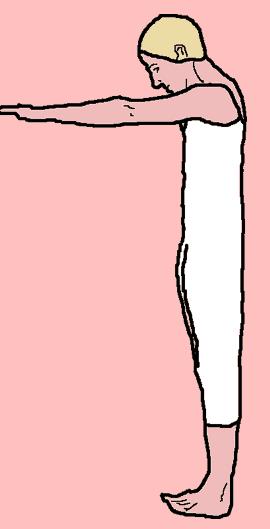|
Howship–Romberg Sign
The Howship–Romberg sign is inner thigh pain on internal rotation of the hip. It can be caused by an obturator hernia. It is named for John Howship and Moritz Heinrich Romberg.M. H. von Romberg. Pathologie und Therapie der Senisbilitäts- und Motilitätsneurosen. 1857. 3rd edition (unfinished) of Romberg’s Lehrbuch der Nervenkrankheiten des Menschen, page 89. References Medical signs {{med-sign-stub ... [...More Info...] [...Related Items...] OR: [Wikipedia] [Google] [Baidu] |
Romberg Sign
Romberg's test, Romberg's sign, or the Romberg maneuver is a test used in an exam of neurology, neurological function for balance, and also as a test for driving under the influence of an intoxicant. The exam is based on the premise that a person requires at least two of the three following senses to maintain balance while standing: proprioception (the ability to know one's body position in space); vestibular function (the ability to know one's head position in space); and visual perception, vision (which can be used to monitor and adjust for changes in body position). A patient who has a problem with proprioception can still maintain balance by using vestibular function and vision. In the Romberg test, the standing patient is asked to close their eyes. An increased loss of balance is interpreted as a positive Romberg's test. The Romberg test is a test of the body's sense of positioning (proprioception), which requires healthy functioning of the dorsal columns of the spinal cord ... [...More Info...] [...Related Items...] OR: [Wikipedia] [Google] [Baidu] |
Obturator Hernia
An obturator hernia is a rare type of hernia of the pelvic floor in which pelvic or abdominal contents protrudes through the obturator foramen. Because of differences in anatomy, it is much more common in women, especially multiparous and older women who have recently lost much weight. The diagnosis is often made intraoperatively after presenting with bowel obstruction. The Howship–Romberg sign is suggestive of an obturator hernia, exacerbated by thigh extension, medial rotation and abduction. It is characterized by lancinating pain in the medial thigh/obturator distribution, extending to the knee; caused by hernia compression of the obturator nerve The obturator nerve in human anatomy arises from the ventral divisions of the second, third, and fourth lumbar nerves in the lumbar plexus; the branch from the third is the largest, while that from the second is often very small. Structure The ob .... References External links Hernias {{disease-stub ... [...More Info...] [...Related Items...] OR: [Wikipedia] [Google] [Baidu] |
John Howship
John Howship FRS (1781 – 22 January 1841) was an English surgeon remembered for describing the Howship–Romberg sign. He was an assistant surgeon at St. George's Infirmary, London and lecturer at St. George's Hospital Medical School. He was a member of the council of the Royal College of Surgeons at the time of his death from a lower leg abscess An abscess is a collection of pus that has built up within the tissue of the body. Signs and symptoms of abscesses include redness, pain, warmth, and swelling. The swelling may feel fluid-filled when pressed. The area of redness often extends b .... Howship was an associate of Robert Hooper, working on illustrations for Hooper's books. He also assisted John Heaviside with exhibits for his museum. Notes External links * {{DEFAULTSORT:Howship, John English surgeons 1781 births 1841 deaths ... [...More Info...] [...Related Items...] OR: [Wikipedia] [Google] [Baidu] |
Moritz Heinrich Romberg
Moritz Heinrich Romberg (11 November 1795 – 16 June 1873) was a German physician and neurologist, born in Meiningen, who published his classic textbook in sections between 1840 and 1846; Edward Henry Sieveking translated it into English in 1853. His nephew was Eduard Heinrich Henoch, who was known for describing Henoch–Schönlein purpura. He described what is now universally recognised as "Romberg's sign" in his original account of tabes dorsalis (a disease caused by syphilis damaging the back of the spinal cord). He related early symptoms as: "''The feet feel numbed in standing, walking or lying down, and the patient has the sensation as if they were covered in fur; the resistance of the ground is not felt...''" Romberg's sign he described as: ''"The gait begins to be insecure... he puts down his feet with greater force...The individual keeps his eyes on his feet to prevent his movements from becoming still more unsteady. If he is ordered to close his eyes while in the erect ... [...More Info...] [...Related Items...] OR: [Wikipedia] [Google] [Baidu] |

